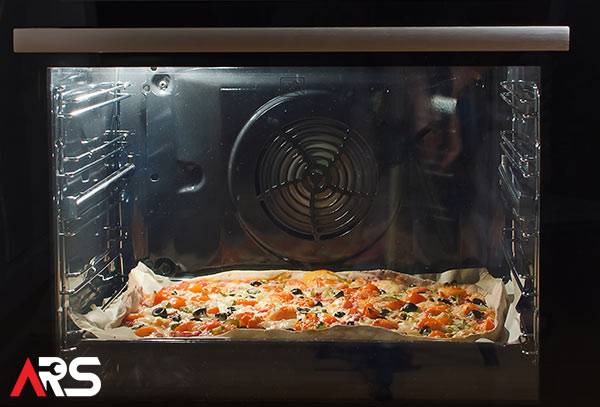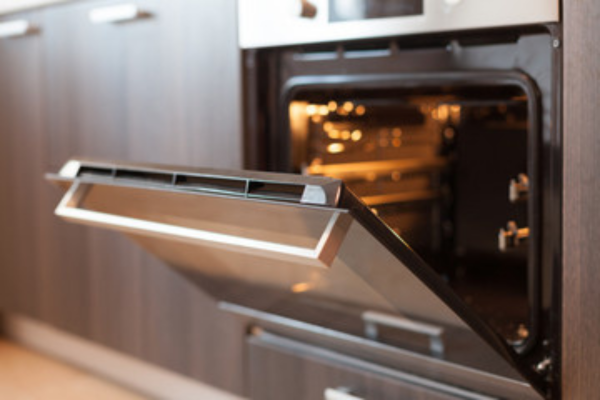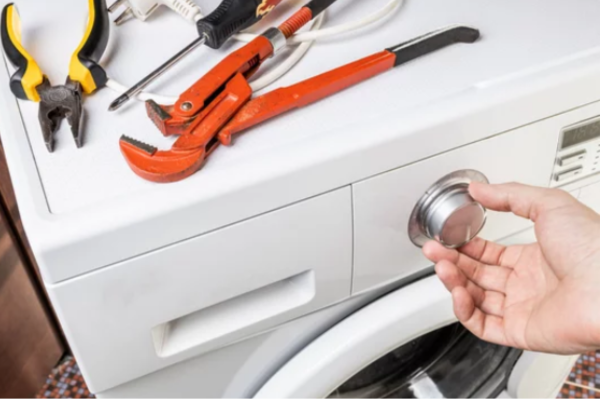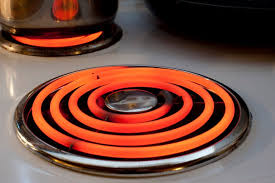
oven thermostat
When it comes to simple questions, like can a thermostat be repaired? We at ARS Appliances Repair Service, are your trusted appliance repair company serving Concord-Vaughan and all over Ontario, and we of course have the answers. Today, we dive into a crucial aspect of oven maintenance: the thermostat. As specialists in appliance repair, we understand the frustration that comes with a malfunctioning oven thermostat. But fear not! This comprehensive guide will address common questions surrounding oven thermostat repair, providing valuable insights and solutions to ensure your oven operates at its best.
So let’s talk about it, Can an Oven Thermostat Be Repaired?
Why is the oven thermostat essential?
The oven thermostat is pivotal in ensuring your culinary creations are cooked to perfection. It regulates the temperature inside the oven, allowing you to achieve consistent results with every dish. From delicate pastries to hearty roasts, the thermostat is the unsung hero behind successful cooking endeavors.
What are the signs of a faulty oven thermostat?
Before diving into repair options, it’s crucial to identify potential issues with your oven thermostat. Are you experiencing uneven cooking, with some areas of your dish undercooked while others are overdone? Perhaps you’ve noticed significant temperature fluctuations during the baking process. These could be telltale signs of a malfunctioning thermostat, warranting further investigation.
How can I diagnose thermostat problems?
Diagnosing thermostat issues requires a systematic approach. Start by preheating your oven to a specific temperature and using an oven thermometer to compare the actual temperature with the set temperature. If there’s a significant variance, your thermostat might be to blame. Additionally, observe the oven’s behavior during cooking to pinpoint any irregularities that could indicate thermostat malfunction.
Is repairing the oven thermostat possible?
Now, onto the burning question: Can an oven thermostat be repaired? The answer is a resounding yes! While a faulty thermostat can disrupt your cooking routine, it’s often a fixable issue. From calibration adjustments to sensor replacements, various repair options are available to restore your oven’s functionality.
Stay tuned as we delve deeper into the intricacies of oven thermostat repair, exploring DIY solutions versus professional assistance and providing actionable tips to ensure your oven operates at peak performance. Whether you’re a seasoned chef or a home cook looking to elevate your culinary skills, understanding and addressing thermostat issues is key to achieving culinary success.
In the next section, we’ll unravel the mysteries of the oven thermostat, shedding light on its inner workings and common types. Join us as we embark on a journey to demystify oven thermostat repair and empower you to take control of your kitchen appliances.
Understanding the Oven Thermostat
Demystifying the Oven Thermostat:
The oven thermostat is a small yet mighty component nestled within the confines of your oven. Its primary function? To maintain a consistent temperature, ensure your culinary creations are cooked to perfection. But what exactly goes on behind the scenes?
How Does the Oven Thermostat Work?
At its core, the oven thermostat operates on a simple principle: sensing temperature fluctuations and adjusting accordingly to maintain the desired heat level. Whether you’re baking delicate pastries or roasting a succulent turkey, the thermostat diligently monitors the oven’s interior temperature, making minute adjustments to ensure even cooking.
Mechanical vs. Electronic Thermostats:
When it comes to oven thermostats, there are two main types: mechanical and electronic. Mechanical thermostats rely on physical components, such as bi-metallic coils, to regulate temperature. These traditional thermostats are durable and reliable but may require occasional calibration to maintain accuracy.
On the other hand, electronic thermostats leverage advanced technology, utilizing sensors and circuitry to achieve precise temperature control. While electronic thermostats offer unparalleled accuracy and programmable features, they may be more complex to repair.
Common Signs of Thermostat Malfunction:
Now that we’ve unraveled the inner workings of the oven thermostat, let’s turn our attention to potential warning signs of malfunction. Are you experiencing uneven baking results? Does your oven struggle to reach the desired temperature, leaving your dishes undercooked or overdone?
These could be indicators of thermostat issues, prompting the need for further inspection and, potentially, repair. By recognizing these telltale signs early on, you can take proactive steps to address the problem and restore your oven to its former glory.
In the next section, we’ll delve into the art of diagnosing thermostat problems, equipping you with the knowledge and tools to identify issues with precision. Join us as we unravel the mysteries of oven thermostat diagnosis, empowering you to conquer culinary challenges with confidence.
The Role of the Oven Thermostat:
The oven thermostat serves as the control center for temperature regulation inside your oven. Whether you’re baking, roasting, or broiling, the thermostat ensures that the oven maintains the desired temperature consistently throughout the cooking process. This precision is essential for achieving evenly cooked dishes with optimal flavor and texture.
Types of Oven Thermostats:
Oven thermostats come in two primary types: mechanical and electronic.
- Mechanical Thermostats: These thermostats rely on a physical mechanism, typically a bimetallic strip or a gas-filled bulb, to detect temperature changes and adjust accordingly. While mechanical thermostats are more traditional, they are known for their durability and reliability.
- Electronic Thermostats: In contrast, electronic thermostats utilize sensors and electronic controls to monitor and regulate oven temperature. These thermostats offer greater precision and programmability, allowing for precise temperature adjustments and advanced cooking features.
Common Signs of Thermostat Issues:
Recognizing the signs of a faulty oven thermostat is crucial for timely diagnosis and repair. Keep an eye out for the following indicators:
- Uneven Cooking: If certain areas of your dishes are consistently undercooked or overcooked, it could signal thermostat problems.
- Temperature Fluctuations: Noticeable fluctuations in oven temperature, even when set to a specific degree, may indicate a malfunctioning thermostat.
- Extended Cooking Times: If your recipes require longer cooking times than usual to achieve desired results, it could be due to inaccurate thermostat readings.
By understanding the role of the oven thermostat and recognizing common signs of malfunction, you can take proactive steps to address issues before they escalate. In the next section, we’ll explore diagnostic techniques to help pinpoint thermostat problems with precision. Stay tuned as we unravel the mysteries of oven thermostat diagnosis and empower you to troubleshoot with confidence.
Diagnosing Thermostat Issues
Now that we’ve established the importance of the oven thermostat and identified potential signs of malfunction, it’s time to delve into the diagnostic process. In this section, we’ll equip you with the knowledge and techniques needed to pinpoint thermostat issues effectively.
Step 1: Preheating Test
Begin by performing a preheating test to gauge the accuracy of your oven’s temperature settings. Set your oven to a specific temperature and use an oven thermometer to measure the actual temperature inside the oven. Allow the oven to preheat fully, then compare the thermometer reading to the set temperature. A significant variance between the two could indicate thermostat problems.
Step 2: Temperature Fluctuation Observation
During cooking, pay close attention to any fluctuations in oven temperature. If you notice sudden drops or spikes in temperature, it may suggest underlying thermostat issues. Keep track of these fluctuations and note any patterns or consistency issues that could help diagnose the problem.
Step 3: Visual Inspection
Perform a visual inspection of your oven thermostat for any visible signs of damage or wear. Check for loose connections, corroded terminals, or any other abnormalities that could affect its functionality. Additionally, inspect the surrounding components, such as wiring and insulation, for signs of wear or damage that may contribute to thermostat malfunction.
Step 4: Calibration Adjustment
Some thermostat issues can be resolved through calibration adjustments. Consult your oven’s user manual for instructions on calibrating the thermostat or seek professional assistance if unsure. Calibration ensures that the thermostat accurately reflects the oven’s temperature, reducing the likelihood of cooking inconsistencies.
Step 5: Professional Diagnosis
If DIY diagnostic methods prove inconclusive or if you’re unsure about performing repairs yourself, it’s advisable to seek a professional diagnosis from a qualified appliance repair technician. Professional technicians have the expertise and specialized tools needed to accurately diagnose thermostat issues and recommend appropriate solutions.
By following these diagnostic steps, you can gain valuable insights into the health of your oven thermostat and identify potential issues that may be affecting its performance. In the next section, we’ll explore repair options for addressing thermostat problems, from simple adjustments to more complex repairs. Join us as we unravel the mysteries of oven thermostat repair and empower you to restore your oven to optimal functionality.
Repairing the Oven Thermostat
Having diagnosed potential issues with your oven thermostat, you’re now equipped to explore repair options. In this section, we’ll delve into various repair techniques and solutions to address thermostat problems effectively.
Calibration Adjustment:
One of the simplest and most common repair methods for a faulty oven thermostat is calibration adjustment. This involves fine-tuning the thermostat to ensure it accurately reflects the oven’s temperature settings. Consult your oven’s user manual for instructions on how to calibrate the thermostat or seek assistance from a professional technician if needed.
Sensor Replacement:
If calibration adjustment fails to resolve the issue, the problem may lie with the thermostat sensor. The sensor is responsible for detecting temperature changes and transmitting this information to the thermostat control mechanism. Over time, sensors can wear out or become damaged, leading to inaccurate temperature readings. Replacing the sensor can often restore the thermostat’s functionality and accuracy.
Wiring and Connection Checks:
Faulty wiring or loose connections can also contribute to thermostat problems. Perform a thorough inspection of the wiring and connections associated with the thermostat, ensuring they are secure and free from damage. Tighten any loose connections and replace any damaged wiring to improve the thermostat’s performance.
Component Replacement:
In some cases, repairing the oven thermostat may require replacing specific components, such as the thermostat itself or related control mechanisms. While component replacement can be more complex and may require professional assistance, it can effectively resolve issues that cannot be addressed through calibration or sensor replacement alone.
Professional Assistance:
If DIY repair attempts prove unsuccessful or if you’re unsure about performing repairs yourself, don’t hesitate to seek professional assistance. Qualified appliance repair technicians have the expertise and experience needed to diagnose and repair oven thermostat issues effectively. They can accurately identify the root cause of the problem and recommend the most appropriate repair solutions to restore your oven to optimal functionality.
By exploring these repair options and solutions, you can address thermostat problems and ensure that your oven operates reliably and efficiently. In the next section, we’ll discuss considerations for deciding between repairing and replacing the oven thermostat, helping you make informed decisions about the best course of action for your appliance. Join us as we continue our journey through the world of oven thermostat repair, empowering you to take control of your kitchen appliances with confidence.
Replacement Considerations
As you navigate the process of repairing your oven thermostat, it’s essential to consider whether repair is the most practical and cost-effective option. In this section, we’ll explore factors to consider when deciding between repairing and replacing the oven thermostat.
Age and Condition of the Appliance:
The age and overall condition of your oven play a significant role in determining whether repair or replacement is the best course of action. If your oven is relatively new and well-maintained, repairing the thermostat may be a viable option. However, if your oven is older and has experienced multiple issues, it may be more cost-effective to invest in a replacement thermostat or consider upgrading to a new oven altogether.
Cost of Repair vs. Replacement:
Evaluate the cost of repairing the oven thermostat versus the cost of replacing it. In some cases, the cost of repairing a thermostat may be relatively low, especially if the issue is minor and can be addressed with simple adjustments or component replacement. However, if the repair involves significant labor or requires expensive replacement parts, it may be more economical to replace the thermostat or invest in a new oven.
Long-Term Reliability:
Consider the long-term reliability of the repaired thermostat compared to a replacement. While repairing the thermostat may resolve the immediate issue, there’s always a risk of future malfunctions, especially if the oven is older or prone to frequent problems. In contrast, replacing the thermostat or upgrading to a new oven can provide peace of mind and ensure reliable performance for years to come.
Energy Efficiency:
Newer ovens and thermostats often incorporate advanced technology and energy-efficient features that can help reduce energy consumption and lower utility bills. If your current oven is outdated and inefficient, replacing the thermostat or upgrading to a new oven may offer long-term cost savings and environmental benefits.
Professional Recommendations:
Seek guidance from qualified appliance repair technicians or professionals when deciding between repairing and replacing the oven thermostat. They can assess the condition of your oven, diagnose any underlying issues, and provide expert advice on the most appropriate course of action based on your specific circumstances and budgetary considerations.
By carefully weighing these factors and considering the pros and cons of repair versus replacement, you can make informed decisions about how to address thermostat issues and ensure the continued functionality of your oven. In the next section, we’ll explore the role of professional repair services in addressing oven thermostat problems and providing expert assistance when needed. Join us as we conclude our journey through the world of oven thermostat repair, empowering you to make confident choices about your appliance repair needs.
The Role of Professional Repair Services
When it comes to addressing oven thermostat issues, enlisting the help of professional repair services can make all the difference. In this section, we’ll explore the valuable role that professional technicians play in diagnosing, repairing, and maintaining your oven thermostat.
Expertise and Experience:
Professional appliance repair technicians possess the knowledge, skills, and experience needed to diagnose and repair a wide range of oven thermostat issues. They undergo extensive training and stay updated on the latest repair techniques and industry trends, ensuring that they can effectively address even the most complex problems with precision and efficiency.
Specialized Tools and Equipment:
Repairing an oven thermostat often requires specialized tools and equipment that may not be readily available to the average homeowner. Professional technicians are equipped with these tools, allowing them to accurately diagnose issues and perform repairs with precision. From temperature probes to diagnostic software, they have access to the resources needed to restore your oven to optimal functionality.
Time and Cost Savings:
Attempting to repair an oven thermostat yourself can be time-consuming and challenging, especially if you lack the necessary expertise and tools. By enlisting the help of professional repair services, you can save time and avoid the frustration of DIY repairs gone awry. Additionally, professional technicians can often complete repairs more efficiently, minimizing downtime and ensuring that your oven is back up and running as quickly as possible.
Warranty Protection:
Many professional repair services offer warranty protection on their workmanship and replacement parts. This provides added peace of mind knowing that your oven thermostat repairs are backed by a guarantee. If any issues arise after the repair, you can rely on the warranty to cover the cost of additional repairs or replacements, helping you avoid unexpected expenses down the road.
Personalized Solutions:
Professional technicians take a personalized approach to oven thermostat repair, tailoring their services to meet your specific needs and preferences. Whether you require a simple calibration adjustment, sensor replacement, or comprehensive thermostat overhaul, they can recommend the most appropriate solutions based on your appliance’s condition and your budgetary constraints.
Customer Satisfaction:
At ARS Appliances Repair Service, customer satisfaction is our top priority. We take pride in delivering exceptional service and exceeding our customers’ expectations at every turn. From prompt and courteous communication to thorough diagnostics and reliable repairs, we go above and beyond to ensure that your experience with us is positive and hassle-free.
In conclusion, professional repair services play a crucial role in addressing oven thermostat issues and ensuring the continued functionality of your appliance. By entrusting your repair needs to experienced technicians, you can enjoy peace of mind knowing that your oven is in capable hands. If you’re experiencing problems with your oven thermostat, don’t hesitate to contact ARS Appliances Repair Service for expert assistance. We’re here to help you get your oven back on track and cooking up delicious meals in no time.
Conclusion
In conclusion, addressing issues with your oven thermostat is essential for maintaining optimal cooking performance and ensuring consistent results in the kitchen. Throughout this guide, we’ve explored the various aspects of oven thermostat repair, from diagnosing problems to considering repair versus replacement options. Whether you’re dealing with uneven cooking, temperature fluctuations, or extended cooking times, understanding the root cause of thermostat issues is the first step toward effective resolution.
At ARS Appliances Repair Service, we’re committed to providing top-quality repair solutions for all your appliance needs, including oven thermostats. Our team of experienced technicians is equipped with the expertise, tools, and resources needed to diagnose and repair a wide range of oven thermostat issues promptly and efficiently. With a focus on customer satisfaction and a dedication to excellence, we strive to exceed your expectations at every turn.
Why Choose ARS Appliances Repair Service?
- Expertise and Experience: Our technicians undergo extensive training and have years of experience in diagnosing and repairing oven thermostat issues.
- Prompt and Reliable Service: We understand the importance of timely repairs and strive to address your appliance issues promptly and efficiently.
- Warranty Protection: Enjoy peace of mind knowing that our repairs are backed by warranty protection on workmanship and replacement parts.
- Personalized Solutions: We take a personalized approach to every repair, tailoring our services to meet your specific needs and preferences.
- Commitment to Customer Satisfaction: Your satisfaction is our priority, and we’re dedicated to delivering exceptional service and exceeding your expectations.
Whether you’re in Concord-Vaughan, Toronto, or anywhere in the GTA, you can count on ARS Appliances Repair Service to provide reliable and professional oven thermostat repair solutions. Contact us today to schedule a diagnostic appointment and take the first step toward restoring your oven to optimal functionality. Thank you for choosing ARS Appliances Repair Service for all your appliance repair needs.







